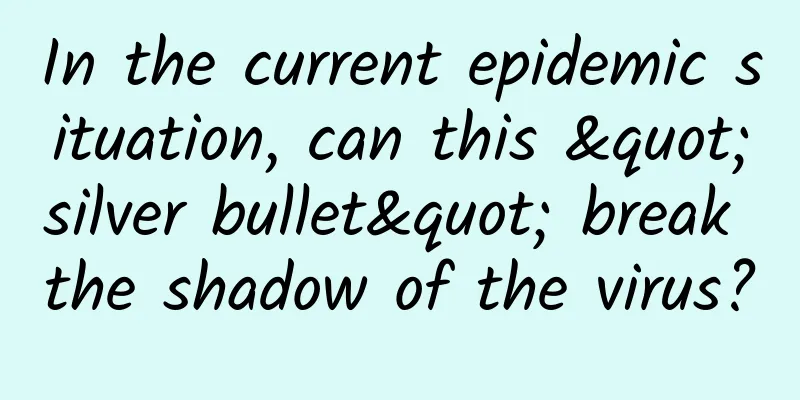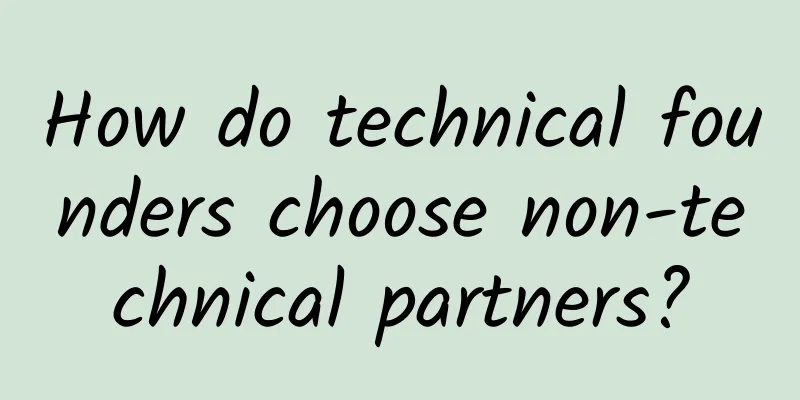In the current epidemic situation, can this "silver bullet" break the shadow of the virus?

|
On the morning of April 3, the People's Daily Health Times published a news report on its official microblog that "8 provinces and cities have used Pfizer's COVID-19 oral medicine, and patients' viral load has dropped significantly" (1). It said that after ordinary and mild patients took a five-day course of Paxlovid, "the viral load dropped significantly, and the time to be discharged from the hospital can be shortened to 5-7 days." This news undoubtedly added an exciting touch to the current severe anti-epidemic situation in China. The Paper, Global Times, Caijing.com and other major media outlets also reprinted this news. However, the news article states that in addition to preventing mild and moderate patients from developing severe symptoms, "the drug can also provide preventive protection for medical staff in high-risk positions," which may represent a misunderstanding among many non-professionals. The antiviral principle of Paxlovid is that its main ingredient (compound PF-07321332) can inhibit the protease activity of the virus and interfere with the virus replication process, thereby achieving an antiviral effect. Therefore, Paxlovid targets the virus itself, rather than enhancing human immunity. If taken without the new coronavirus in the body, the drug will be metabolized and cleared normally; when the virus really invades the human body, the previously ingested drug may have been completely metabolized and can no longer play any antiviral role. Therefore, Paxlovid cannot prevent and can only treat mild symptoms. In fact, when you open the drug's official page (2), the following pops up: Restrictions on medication use: PAXLOVID is not authorized for the initial treatment of patients hospitalized with severe or critical COVID-19 PAXLOVID is not authorized for use as pre-exposure or post-exposure prophylaxis for COVID-19 (i.e., not for use to prevent COVID-19) PAXLOVID is not authorized for use for more than 5 consecutive days After Pfizer announced the Phase III clinical results of Paxlovid in November 2021, Fanpu published an article detailing the drug's mechanism of action and development history. It is republished today for your review. Written by | Wangwang Since the outbreak of the COVID-19 pandemic, people have been looking for effective antiviral drugs among previously approved drugs. So far, there have been more than 500 drug research data and more than 400 clinical trials for small molecule research on the new coronavirus, most of which are approved drugs. Unfortunately, the new use of old drugs has achieved little effect and no satisfactory results have been achieved. Although Remdesivir developed by Gilead has shown certain efficacy, its early application is limited because it needs to be administered intravenously, and its efficacy is limited in patients who need hospitalization (see "People's Hope Has Not Come True: Remdesivir Still Needs to Be Verified" for details). There are also some new oral drugs that have achieved positive clinical trial results or are undergoing clinical trials, such as the nucleoside drugs monaprevir and AT-527 that act on viral RNA polymerase [1]. On November 5, 2021, Pfizer announced the results of a Phase III clinical study of Paxlovid, an oral COVID-19 drug it developed, showing that patients with mild to moderate COVID-19 who took the drug within three days of diagnosis could reduce their risk of hospitalization or death by about 89%. Paxlovid's performance is comparable to the therapeutic effect of COVID-19 neutralizing antibodies, and is significantly better than Molnupiravir, a broad-spectrum antiviral drug developed by Merck that was approved for marketing in the UK a few days ago. This news has attracted widespread attention, with some media calling Paxlovid a "silver/magic bullet" to combat COVID-19 infection. The spike protein of the novel coronavirus is still mutating, causing unrest in the world. Can the "silver bullet" break this terrifying shadow for mankind? The answer may lie in the research and development history of this small molecule antiviral drug. Clearing the fog and finding druggable targets After the emergence of the new coronavirus, scientists quickly analyzed the virus's genetic sequence and structure, laying a solid foundation for the subsequent design of vaccines and the development of antiviral drugs. Now we know that the new coronavirus is a single-stranded positive-strand RNA virus with an envelope, as shown in Figure 1, which consists of viral RNA and four structural proteins: Figure 1 Schematic diagram of SARS-CoV-2 and its structural proteins[2] ① Spike protein (S) is mainly responsible for binding to host cell receptors and mediating viral invasion; ② Envelope protein (E) ③ Membrane protein (M), envelope protein and membrane protein are mainly involved in the virus replication, assembly and budding process; ④ Nucleocapsid protein (N) encapsulates the viral genome to form a nucleoprotein complex. After the virus enters the host cell, it will decompose and release the viral RNA, which is translated into two polyproteins pp1a and pp1ab by the ribosomes in the host cell. These two polyproteins are like a whole box of puzzle pieces that cannot function yet and need to be disassembled and reassembled under the action of 3CL protease and PL protease to form functional structural proteins. In professional terms, the protease catalyzes the intramolecular hydrolysis, cuts and produces multiple non-structural proteins, and forms a replication-transcription complex to complete the subsequent genome replication and structural protein synthesis process (Figure 2). Figure 2 Schematic diagram of the SARS-CoV-2 infection cycle in host cells[2] In this process, 3CL protease (3C-like protease) is responsible for cutting 11 sites of the polyprotein to produce structural proteins that are very important for the survival and reproduction of the virus, so it is also called the main protease (Mpro). We can imagine that if the small molecule drugs we design can inhibit the activity of 3CL protease, we can interfere with the viral replication process and achieve an antiviral effect [2]. Scientists have certainly thought of this, so the current research on 3CL protease inhibitors is very popular. In the past, viral proteases were also very important targets when designing small molecule drugs for other viruses. For example, small molecule oral therapies for the treatment of human immunodeficiency virus (HIV) and hepatitis C virus (HCV) have been developed using proteases as targets [3]. In addition, recent studies have demonstrated the pharmacological activity of oral 3CL protease inhibitors in transgenic mouse models infected with SARS-CoV-2 [4]. All of this proves that 3CL protease inhibitors have great potential as antiviral drugs. In April 2020, Yang Haitao, Rao Zihe and their team reported the crystal structure of the SARS-CoV-2 3CL protease and its inhibitor N3 [5]. The protease is a homodimer, and each monomer consists of three domains (Figure 3). A substrate binding pocket is formed between domains I and II. In the substrate binding pocket, Cys-145 and His-41 form a catalytic dimer that can bind to and cleave polyproteins. Figure 3. Crystal structure of SARS-CoV-2 3CL protease and inhibitor N3[5] 3CL protease is highly conserved among coronaviruses of different genera and has no homologous protein in the human body. This means that designing inhibitors using it as a drug target is unlikely to "accidentally damage" other proteins, and a higher safety window or therapeutic index can be achieved. In general, since 3CL protease plays a key role in the survival and reproduction of the virus and has no significant homology with known proteases in the human body, its inhibitors have good selectivity and safety expectations. Moreover, unlike vaccines or monoclonal antibody drugs, it cannot prevent variants of the spike protein (variants of the new coronavirus are emerging in an endless stream and are extremely threatening). The 3CL protease inhibitors of the new coronavirus have become a very promising and representative small molecule antiviral drug design idea, which can be used to design antiviral oral drugs to treat COVID-19. From SARS to SARS-CoV-2 In 2002, SARS broke out. In response to the epidemic, Pfizer developed the compound PF-00835231 based on previous work (Figure 4). When exploring the mechanism of this compound's anti-SARS-CoV-1 activity, researchers used a substrate cleavage experiment based on fluorescence resonance energy transfer (FRET) to screen it as a 3CL protease inhibitor of SARS-CoV-1. However, SARS came and went quickly, and with the end of the SARS epidemic in 2003, the research and development plan for PF-00835231 was shelved [6]. In early 2020, the COVID-19 outbreak broke out around the world and has been raging ever since. A large number of studies have shown that SARS CoV-2, the culprit that causes COVID-19, is closely related to SARS CoV-1, which caused SARS in 2002. Both SARS coronavirus genomes encode two overlapping polyproteins, which are cleaved by 3CL proteases at specific sites during the post-translational processing steps that are critical for coronavirus replication. More importantly, the 3CL proteases of the two viruses are 100% identical in sequence in the catalytic domain that binds to the substrate, which means that small molecules that inhibit SARS-CoV-1 3CL protease should also inhibit SARS-CoV-2 3CL protease. Therefore, Pfizer picked up the compound PF-00835231 again, speculating that it also has a good inhibitory effect on the 3CL protease of SARS-CoV-2. Subsequent research results confirmed the conjecture of Pfizer scientists, and PF-00835231 showed a strong inhibitory effect on SARS-CoV-2 3CL protease (inhibition constant (Ki) = 0.271 nM). As shown in the first row of data in Figure 4, PF-00835231 has excellent antiviral activity and metabolic stability, but its permeability and oral availability are low, making it difficult to administer orally. Currently, clinical trials of PF-00835231 are using its phosphate prodrug form (PF-07304814) as an intravenous treatment option for hospitalized COVID-19 patients [8]. Compound modification In order to develop a drug suitable for oral administration, Pfizer began to modify the compound PF-00835231[7]. Initially, we will refer to PF-00835231 as “Compound 1”. The first thing researchers considered was to improve the oral bioavailability of the molecule, that is, to increase the degree to which the drug enters the systemic circulation. Since more hydrogen bond donors often lead to poor oral bioavailability, researchers first changed the α-hydroxymethyl ketone of compound 1 to a cyano group to obtain compound 2; and then introduced azabicyclic and benzothiazole at the same time on the basis of 2 to obtain compound 3. At this time, compared with compound 1, the oral availability and oral dose fraction absorbed by the gastrointestinal tract of 2 were significantly improved; the passive absorption permeability of compound 3 was also significantly enhanced, but the antiviral activity of 2 and 3 was significantly decreased compared with 1. From the analysis of the binding mode between the molecule and the protein (Figure 5C), it can be seen that compound 3 effectively fills the lipophilic pocket formed by Met49, Met165 and His41, but cannot form an effective hydrogen bond with Gln189 (as shown in Figure 5C), which makes its activity far less than 1. And similar to compound 1, the researchers observed that the indole fragments in these two molecules did not occupy the pocket well. Therefore, the researchers further modified the structure of 3 by changing the indole fragment to a methylsulfonamide structure to obtain compound 4. Compared with 1 and 3, 4 can form hydrogen bonds with both Gln189 and Glu166, showing better protein binding ability, antiviral activity and oral absorption effect. Figure 5. (A) Co-crystal structure of SARS-CoV-2-3CL protease and compound 1. (B) The bicyclic model of compound 3 is superimposed on the conformation of the proline molecule. (C) Compound 3 effectively fills the lipophilic pocket formed by Met49, Met165 and His41, but cannot form an effective hydrogen bond with Gln189. (D) Compound 4 can form hydrogen bonds with Gln189 and Glu166. (E) Co-crystal structure of clinical candidate PF-07321332 (compound 6) bound to SARS-CoV-2-3CL protease. (F) Cys145 forms a reversible covalent bond with the cyano group of compound 6. [7] Based on compound 4, the researchers further optimized the structure by replacing the methylsulfonamide fragment with trifluoroacetamide to obtain compound 5. Compounds 5 and 4 have similar inhibitory activities against 3CL protease, but the antiviral activity and permeability of 5 in cell models have been significantly improved. At the same time, compound 5 showed good pharmacokinetic properties in tests in mouse and monkey models. Finally, the structure of 5 was simplified, retaining its key functional fragments, and the benzothiazole group of 5 was replaced by a cyano group to obtain compound 6, which is the clinical molecule PF-07321332 obtained in this transformation (see the last row of data in Figure 4). Compared with 2-4, compound 6 has better antiviral activity and higher bioavailability. In the incubation experiment of compound 6 with SARS-CoV-2-3CL protease, the researchers found that compound 6 is a reversible covalent inhibitor, which means that it has a lower risk of off-target toxicity than general small molecule covalent inhibitors. Taking all factors into consideration, compound 6 has the advantages of relatively simple structure, easy industrial production and scale-up synthesis, better solubility, and lower formulation difficulty. Therefore. Pfizer finally selected compound 6 as a clinical candidate drug for subsequent development. In addition to inhibiting the activity of SARS-CoV-2-3CL protease, the researchers also found that the compound PF-07321332 has a broad inhibitory effect on the activity of coronavirus 3CL protease, including beta coronaviruses (SARS-CoV-2, SARS-CoV-1, HKU1, OC43, MERS) and alpha coronaviruses (229E, NL63); it also exhibits inhibitory activity against HIV-1 protease (a viral aspartyl protease). After layers of transformation, scientists finally obtained the compound PF-07321332 with better antiviral activity and higher bioavailability. Taking all factors into consideration, PF-07321332 has the advantages of relatively simple structure, easy industrial production and scale-up synthesis, better solubility, and lower formulation difficulty, and is a very promising clinical candidate compound. Pharmacological evaluation and modification based on pharmacokinetic properties After obtaining compound 6, PF-07321332, the researchers evaluated the in vitro antiviral activity of PF-07321332 using two pathologically relevant cell models: alveolar basal epithelial cells (A549) derived from human adenocarcinoma expressing ACE2 and normal differentiated human bronchial epithelial cells (dNHBE). The results of both cell models showed that PF-07321332 had a strong inhibitory effect on viral replication. After the cell-level evaluation, Pfizer conducted in vivo efficacy evaluation. The experimenters used an animal model of mice adapted to SARS-CoV-2 to evaluate the in vivo antiviral activity of PF-07321332. The results showed that at the antiviral concentration observed in previous in vitro experiments, it can also effectively reduce the virus concentration in the lungs of infected mice in vivo, and can significantly improve the multifocal lung lesions of infected mice, which provides an effective basis for the further development of the compound towards clinical application. In addition, the researchers continued to explore the preclinical safety and drug metabolism characteristics of the compound. The experimental results show that the compound PF-07321332 has high safety and selectivity, and did not show mutagenic or fission toxicity in in vitro genetic toxicity studies. In the monkey oral administration model, the bioavailability of the compound is relatively low. This is because the cytochrome P450 3A4 enzyme (CYP3A4 for short) in the liver oxidizes exogenous organic small molecules in order to excrete them from the body. This reduces the availability of oral drugs (a large part of them is excreted). In addition, researchers have also observed that multiple sites of PF-07321332 are oxidatively metabolized by CYP3A4 in liver microsomes. These studies show that the effect of CYP3A4 on the metabolism of PF-07321332 is crucial. Therefore, the researchers used the CYP3A4 inhibitor Ritonavir (RTV) as a co-administration to improve the therapeutic effect of PF-07321332. This strategy is also based on the previous antiviral drug administration strategy, because RTV is a pharmacokinetic enhancer of several marketed protease inhibitors (such as darunavir and lopinavir) [9]. It can inactivate CYP3A4, reduce the metabolic clearance rate of major antiviral drugs, and improve the bioavailability and pharmacokinetics of drugs. Figure 6 Preclinical toxicology and single ascending dose exposure studies of PF-07321332 in healthy subjects. (A) Oral toxicokinetic exposure of PF-07321332 in rats given once daily (day 14). (B) Oral toxicokinetic exposure of PF-07321332 in monkeys given twice daily (day 15). (C) Plasma concentration changes in adults after oral administration of 150 mg PF-07321332 and 250 mg PF-07321332 + RTV. (D) Plasma concentrations in adults after oral administration of 250 mg PF-07321332 and 100 mg RTV within 12 hours. [7] The researchers continued to conduct a randomized, double-blind, placebo-controlled study on the safety, tolerability, and pharmacokinetics of PF-07321332 alone and in combination with RTV in healthy subjects. At each test dose, 4 subjects were randomly assigned to receive active treatment and 2 to receive placebo. The results showed that PF-07321332 has high safety and tolerability. When co-administered with RTV, the oral plasma concentration was significantly increased and far higher than the EC90 value of SARS-CoV-2 antiviral (Figure 6C, 6D). The results showed that PF-07321332 is an orally absorbable inhibitor of the key SARS-CoV-2 protease, with very good in vitro antiviral activity and excellent off-target selectivity, as well as high safety. When co-administered with RTV, it showed excellent antiviral effects and clinical application prospects. Therefore, Pfizer launched Paxlovid, a compound antiviral drug composed of Ritonavir and the compound PF-07321332, for subsequent clinical Phase II/III studies. On November 5, Pfizer announced the Phase III clinical results of its oral COVID-19 drug Paxlovid (compound PF-07321332). The data showed that patients with mild to moderate COVID-19 who took the drug within three days of diagnosis could reduce their risk of hospitalization or death by about 89%. Based on the positive clinical results, the independent data monitoring committee recommended that the clinical trial be terminated ahead of schedule and that an application for Paxlovid's marketing approval be submitted to regulatory authorities. On the day the results were announced, Pfizer President Albert Bourla said in a statement: "The emergence of Paxlovid will be a game-changer in our fight against the epidemic." Annaliesa Anderson, a Pfizer executive in charge of the late-stage development of the drug, told a New York Times reporter, "The results are better than the best results we could have dreamed of. We hope that the drug will help us return to normal life and end the epidemic." US President Biden also said that the drug is expected to become an effective tool in our hands to fight COVID-19 [10]. On November 16, Pfizer formally submitted an application for emergency marketing approval to the US FDA[11]. Conclusion The development of Paxlovid started with Pfizer's work during the SARS period. It comprehensively considered the structure, pharmacokinetic properties, dosing strategy and other aspects, and finally achieved excellent clinical results through the researchers' clever transformation and complete experimental design. This is a classic case of close cooperation between multidisciplinary research groups of medicinal chemists, pharmacologists, and virologists, following past experience and accumulated knowledge, relying on computer assistance, designing and modifying the drugability of lead molecules, and finally achieving success. Since the outbreak of the COVID-19 pandemic, scientists have been working tirelessly, from early vaccines to current small molecule drugs, trying to use various means to curb the continued development of the epidemic. The emergence of Pfizer Paxlovid, like the emergence of effective vaccines represented by mRNA technology, is likely to be a landmark and watershed event in people's fight against the epidemic. According to existing data, the emergence of Paxlovid can be said to be a specific drug for COVID-19 infection, comparable to penicillin against bacterial infection, and there is great hope that people will bid farewell to the era of fear of COVID-19 infection. Therefore, although the epidemic is not over yet, we are relying on the power of science to achieve one victory and breakthrough after another on the road to fighting the epidemic. By controlling the source of infection (such as a certain degree of isolation), blocking the transmission route (masks), and protecting susceptible populations (vaccination and effective drugs), we should be able to control the epidemic and return to normal life. References [1] Good SS, Westover J, Jung KH, et al. AT-527, a Double Prodrug of a Guanosine Nucleotide Analog, Is a Potent Inhibitor of SARS-CoV-2 In Vitro and a Promising Oral Antiviral for Treatment of COVID-19. Antimicrob Agents Chemother. 2021;65(4):e02479-20. Published 2021 Mar 18. doi:10.1128/AAC.02479-20 [2] Gil C, Ginex T, Maestro I, et al. COVID-19: Drug Targets and Potential Treatments. J Med Chem. 2020;63(21):12359-12386. doi:10.1021/acs.jmedchem.0c00606 [3] Zhang L, Lin D, Kusov Y, et al. α-Ketoamides as Broad-Spectrum Inhibitors of Coronavirus and Enterovirus Replication: Structure-Based Design, Synthesis, and Activity Assessment. J Med Chem. 2020;63(9):4562-4578. doi:10.1021/acs.jmedchem.9b01828 [4] Qiao J, Li YS, Zeng R, et al. SARS-CoV-2 Mpro inhibitors with antiviral activity in a transgenic mouse model. Science. 2021;371(6536):1374-1378. doi:10.1126/science.abf1611 [5] Jin Z, Du [6] Hoffman RL, Kania RS, Brothers MA, et al. Discovery of Ketone-Based Covalent Inhibitors of Coronavirus 3CL Proteases for the Potential Therapeutic Treatment of COVID-19. J Med Chem. 2020;63(21):12725-12747. doi:10.1021/acs.jmedchem.0c01063 [7] Owen, DR, Allerton, C., Anderson, AS, Aschenbrenner, L., Avery, M., Berritt, S., Boras, B., Cardin, RD, Carlo, A., Coffman, KJ, Dantonio, A., Di, L., Eng, H., Ferre, R., Gajiwala, KS, Gibson, SA, Greasley, SE, Hurst, BL, Kadar, EP, Kalgutkar, AS, … Zhu, Y. (2021). An oral SARS-CoV-2 Mpro inhibitor clinical candidate for the treatment of COVID-19. Science (New York, NY), eabl4784. Advance online publication. https://doi.org/10.1126/science.abl4784 [8] https://www.biorxiv.org/content/10.1101/2020.09.12.293498v2 [9] Cvetkovic RS, Goa KL. Lopinavir/ritonavir: a review of its use in the management of HIV infection. Drugs. 2003;63(8):769-802. doi:10.2165/00003495-200363080-00004 [10] https://www.nytimes.com/2021/11/05/health/pfizer-covid-pill.html [11] https://www.pfizer.com/news/press-release/press-release-detail/pfizer-seeks-emergency-use-authorization-novel-covid-19 References (1) https://weibo.com/jiankangshibaoblog?sudaref=cn.bing.com&display=0&retcode=6102&is_hot=1 (2) https://www.covid19oralrx-hcp.com/?source=google&HBX_PK=s_paxlovid+pharmacist&skwid=43700068281647622&gcli d=CjwKCAjwrqqSBhBbEiwAlQeqGiRSlZkbRyJWhSoGJfgygLk0hh6ex3_348y-9qTKx-JhL6Iw2nJiiRoCWssQAvD_BwE&gclsrc=aw.ds Special Tips 1. Go to the "Featured Column" at the bottom of the menu of the "Fanpu" WeChat public account to read a series of popular science articles on different topics. 2. Fanpu provides a function to search articles by month. Follow the official account and reply with the four-digit year + month, such as "1903", to get the article index for March 2019, and so on. Copyright statement: Personal forwarding is welcome. Any form of media or organization is not allowed to reprint or excerpt without authorization. For reprint authorization, please contact the backstage of the "Fanpu" WeChat public account. |
<<: Don't believe them! These are all rumors!
>>: The beauty of festivals丨Why is Qingming Festival always around April 5th?
Recommend
How did Zhang Xiaolong build the huge business empire of WeChat?
WeChat's business strategy has always been co...
SUSE releases technology trend predictions for 2025
Author: Vishal Ghariwala, CTO, SUSE Asia Pacific ...
Will Apple open up its iOS operating system? It missed the opportunity 30 years ago
US financial website Marketwatch wrote on Thursda...
Science and Technology News | Scientists discover millipede with 1,306 legs
News Station Screenshot of the Ministry of Cultur...
The most comprehensive analysis of headline information flow advertising! Delivery tips included!
As the largest information flow platform at prese...
Only 6 companies in China's mobile phone industry are profitable. Why is the industry still flocking to this "cash cow"?
The mobile phone industry is one of the hottest m...
There is real "magic" in physics, and it represents a class of quantum resources
There is indeed "magic" in physics, but...
Sogou promotion account background optimization skills
In the hot summer, faced with complex account man...
Tonga volcano erupts, scallops run 9,700 kilometers to sneak to Zhangzi Island? Scallops: I can't run!
There is something strange happening with the sca...
Starbucks membership system disassembled!
Starbucks , a controversial brand. At the product...
Longer term trends of the top 10 programming languages ranking (1989-2014)
IOBE has just released the November programming l...
How far is ASM from AI?
According to many predictions, Apple's search...
Meizu Note 9 review: A sub-flagship nightmare, the best PUBG smartphone you can buy
When Li Nan live-streamed a PUBG game with three ...
AE+PS Million-dollar Post-production Advanced Course Animation Special Effects
AE+PS Million-dollar Post-production Advanced Cou...









